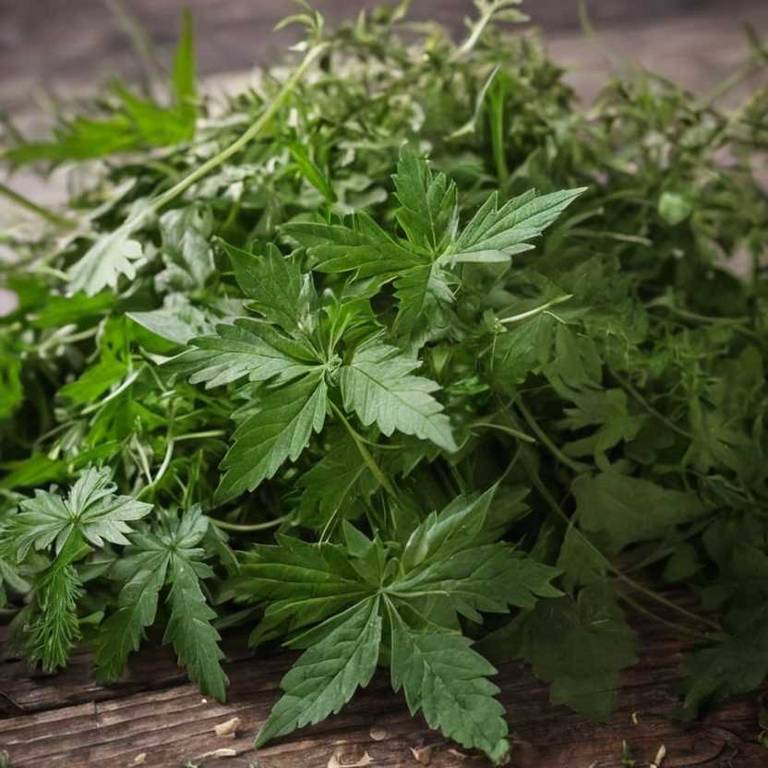By Leen Randell
Updated: Jul 06, 2024
What to know about Aralia nudicaulis (devil's walking stick) before using it medicinally

Aralia nudicaulis, commonly known as devil's walking stick, is a plant that boasts an array of health benefits, from its anti-inflammatory properties to its role in reducing blood pressure and cholesterol levels.
As a low-maintenance and adaptable perennial, Aralia nudicaulis is a favorite among gardeners due to its unique architectural features and tolerance for shade. This plant's botanical characteristics include its distinctive compound leaves and umbrella-like inflorescence, which are often used in botanical and ornamental contexts.
In traditional medicine, Aralia nudicaulis has been referenced by various cultures, including Native American tribes, who utilized its roots for medicinal purposes.
This article explains the medicinal, horticultural, botanical, and historical aspects of Aralia nudicaulis.
What are the medicinal properties of Aralia nudicaulis?
Aralia nudicaulis helps with various health conditions, including fever reduction, skin irritations, and digestive issues. Its medicinal properties make it a popular remedy in traditional medicine. The plant has been used to treat respiratory problems and wounds.
The active constituents responsible for the medicinal properties of Aralia nudicaulis are sesquiterpenes, flavonoids, and triterpenes. These compounds have been shown to have anti-inflammatory, antimicrobial, and antioxidant effects. The sesquiterpenes are particularly noteworthy for their antispasmodic and sedative properties.
The stems, roots, and leaves of the plant are most commonly used for medicinal purposes. The stems are rich in sesquiterpenes, making them a popular choice for treating respiratory issues. The roots and leaves are used to treat digestive problems and skin irritations.
Improper use of Aralia nudicaulis can lead to side effects such as dizziness, nausea, and headaches. Overconsumption of the plant's active constituents can also cause liver and kidney damage. Pregnant and breastfeeding women should avoid using the plant due to its potential teratogenic effects.
When using Aralia nudicaulis medicinally, it is essential to follow proper precautions. The plant should be used in moderation, and the dosage should be adjusted based on individual needs. Pregnant and breastfeeding women, as well as individuals with kidney or liver disease, should consult a healthcare professional before using the plant.
What are the horticulural aspects of Aralia nudicaulis?
Aralia nudicaulis grow in a variety of conditions, but prefer moist, rich soil and partial shade. It can tolerate full sun but may require more water. This plant can also grow in a range of pH levels, from acidic to alkaline.
When planting Aralia nudicaulis, it's essential to choose a location with good air circulation to prevent disease. Plant the rhizome in the spring or fall, spacing them 3-4 feet apart. Water regularly, but avoid overwatering, which can lead to root rot.
Harvest the leaves and stems of Aralia nudicaulis in the summer or fall when they are fully grown. Cut the stems back to about 6 inches from the ground to encourage new growth. The rhizomes can be harvested in the fall, and the roots can be divided and replanted.
Pests that commonly affect Aralia nudicaulis include spider mites, mealybugs, and scale. Diseases that affect this plant include root rot, leaf spot, and powdery mildew. Regularly inspect the plant for signs of pests or disease, and take action promptly to prevent further damage.
What are the botanical aspects of Aralia nudicaulis?
Aralia nudicaulis is a deciduous perennial shrub with a distinctive growth habit. It has a woody stem, 1-4 m tall, with a rounded crown, and a greyish-brown bark. The leaves are alternate, pinnate, and 10-50 cm long.
Aralia nudicaulis belongs to the family Araliaceae, and its taxonomical classification is as follows: kingdom Plantae, clade Angiosperms, clade Eudicots, clade Asterids, order Apiales, family Araliaceae, subfamily Aralioideae, tribe Aralieae, genus Aralia, species A. nudicaulis.
Several variants of Aralia nudicaulis have been identified, including var. angustifolia, var. latifolia, and var. occidentalis, which differ in leaf size and shape. However, the exact classification and recognition of these variants are still under study and debate among botanists.
Aralia nudicaulis is native to North America, and its geographical distribution covers eastern Canada and the northeastern United States, including states such as New York, Massachusetts, and Pennsylvania. It thrives in woodland edges, rocky outcrops, and along streams.
The life cycle of Aralia nudicaulis begins in spring, when new growth emerges from the stem tips. The leaves develop and mature in summer, and the plant produces small greenish-yellow flowers in late summer. After pollination, the flowers develop into red berries that ripen in fall. In winter, the plant dies back, but the roots remain dormant until spring.
What are the historical aspects of Aralia nudicaulis?
Aralia nudicaulis is a plant with a rich history of traditional uses in medicine and magic. Indigenous communities in North America used its roots to treat arthritis, fever, and skin conditions. European settlers adopted these uses and applied them to their own remedies.
Mythological references to Aralia nudicaulis date back to Native American folklore, where it was associated with the "little people" and considered a charm against evil spirits. In some cultures, the plant's unusual appearance was seen as a warning against the dangers of the forest.
Symbolic meanings of Aralia nudicaulis vary across cultures. In some traditions, the plant represents protection, while in others it symbolizes strength and resilience. The plant's unique structure, with its prickly stem and umbrella-like foliage, has led to associations with defense and protection.
Historical texts mention Aralia nudicaulis in various accounts of exploration and settlement. The plant is described in the journals of early European explorers, including John Bartram, who wrote about its medicinal properties in the 18th century.
Historical artifacts featuring Aralia nudicaulis include illustrations in herbalism texts and folkloric art from indigenous cultures. The plant's image is often depicted in combination with other symbols, representing the interconnectedness of medicine, magic, and everyday life.